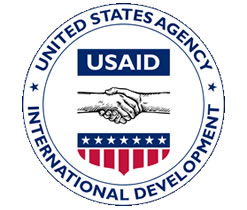 The United States Agency for International Development (USAID) and its partners, has developed an Atlas on West Africa that could help develop better policies for related to land cover and its utilisation.
The United States Agency for International Development (USAID) and its partners, has developed an Atlas on West Africa that could help develop better policies for related to land cover and its utilisation.
The Atlas, titled, “Landscapes of West Africa-A window on a Changing World”; documents changes across the 24 classes of Land use and Land Cover (LULC) of West African countries and Chad.
It used satellite images collected in a time series from the mid-1960s, 1975, 2000 and 2013.
To disseminate the information for beneficiaries to learn how to use it, a two-day workshop opened in Accra on Wednesday for technical experts and officials of seven participating countries.
Ghana, the Gambia, Liberia, Sierra Leone, Nigeria, Togo and Benin are attending the workshop, which would elicit actions that would ensure the sustenance and longevity of the LULC program.
Speaking at the opening ceremony, Mr Alexander Deprez, USAID’s West Africa Mission Director, said the Sub-region continued to experience changes in various areas, including population growth.
The number of people in the 17 countries participating in the LULC program stood at 369 million people and it is expected to double to about 835 million by 2050.
The effects of long-term droughts, especially on agriculture, was also another major challenge facing the region, he noted.
For instance, the drought in the Sahel in the mid-1970s to the 1980s, which led to the creation of the Permanent Interstate Committee for Drought Control in the Sahel (CILSS), he said, leading to the expansion of agriculture to ensure food security.
Mr Deprez stated, however, that this expansion of agriculture had yet to deliver significant gains in productivity though it had led to a loss of forests, woodland and soils as farms expanded their farmlands in other land covers.”
“Without doubt, the productivity and performance of the Agricultural sector across West Africa is seriously challenged, and the governments and people of the region still live with the threat of a food crisis,” he stated.
For Ghana, he said, the most obvious land cover change, as shown by the Atlas, was the major increase in agricultural land in all the regions, with the largest increases seen in the Northeast, East-central and South-western parts of Ghana; followed by the degradation of the forest.
From 1975 to 2000, agricultural lands expanded from 13 per cent to 28 per cent of Ghana’s total area, and continued rapidly, reaching 32 per cent of land area in 2013.
However, the forest degradation showed a slight decline in area from about 1,400 square (sq) kilometres (km) in 1975 to 15,500 sq km in 2000.
It, however, accelerated sharply between 2000 and 2013 with forests reducing by an additional 20 per cent in 2013.
Mr Deprez stated that there was the need for intensification of agriculture; instead of expansion of agricultural land.
There should also be more support by governments, donors and private sector to increase productivity, especially for small scale farmers.
He said the focus must be on increasing yields on current farms by the use of inputs such as fertilisers; either chemical or organic, and improved seeds, better use of water and land cover, as well as other elements like access to markets, investments in processing among others.
It was also important, he said, for governments, donors and private to look at ways of adapting the technologies used of large commercial farms to intensify agricultural production at the small-scale level.
Mr Foster Mensah, the Executive Director of the Centre for Remote Sensing and Geographic Information Services, at the University of Ghana, said Ghana must think of how to intensify efforts to get the maximum yield from the same piece of land.
This is, especially, in the light of the Planting for Food and jobs initiative, instead of expanding the land, which will degrade the environment and deplete the soil nutrients.
“For the next 10 years or 15 years, if we do not manage what we have, we will still be depleting and extending,” he cautioned.
“This is the time for us, using these data sets to see how we can begin to use our land and natural resources.”
Professor Sanoussi Atta, the Head of Training and Research Department, CILSS/ARC, said continuing on the same trend as the time series observed revealed, would mean increased forest degradation and extinction of some animal species in the future.
This, he said, called for decision makers to conscientise their populations, especially the younger generation, on the issues of degradation to preserve the environment for future generations.
“It is important for the country to make better policies on how to preserve and conserve the land,” he noted.
Prof. Atta urged national governments and other stakeholders to widely disseminate the Atlas, which he said, was also available for free online, so that people could use it in solving the problems as well as for advocacy.
Source: GNA























